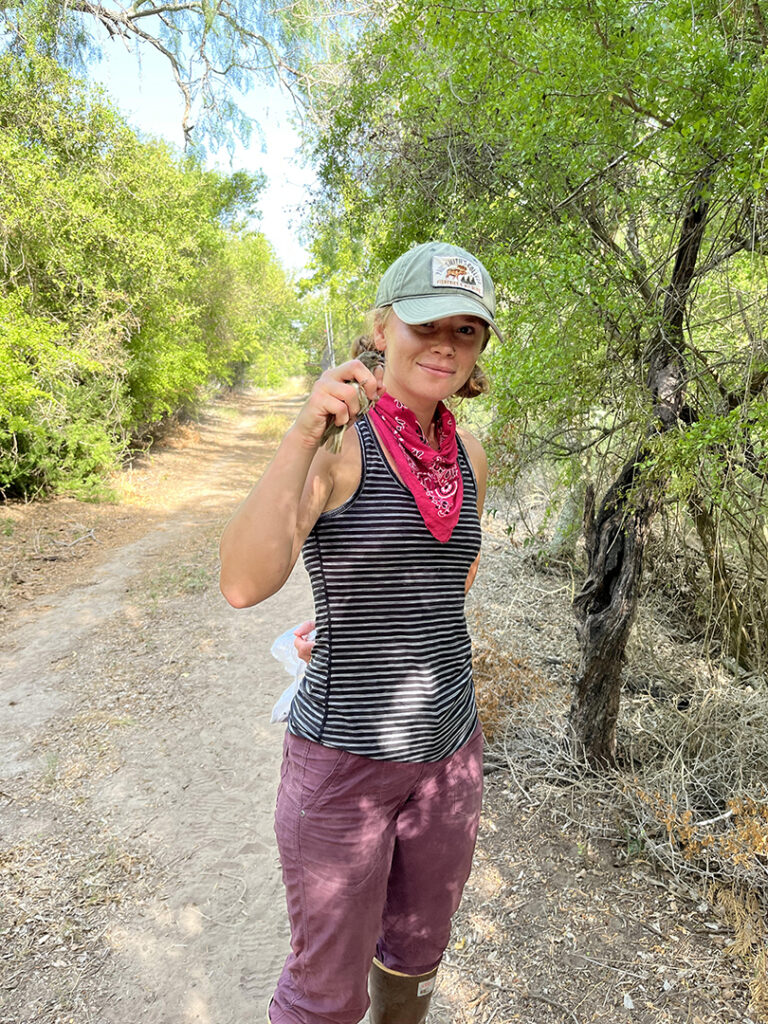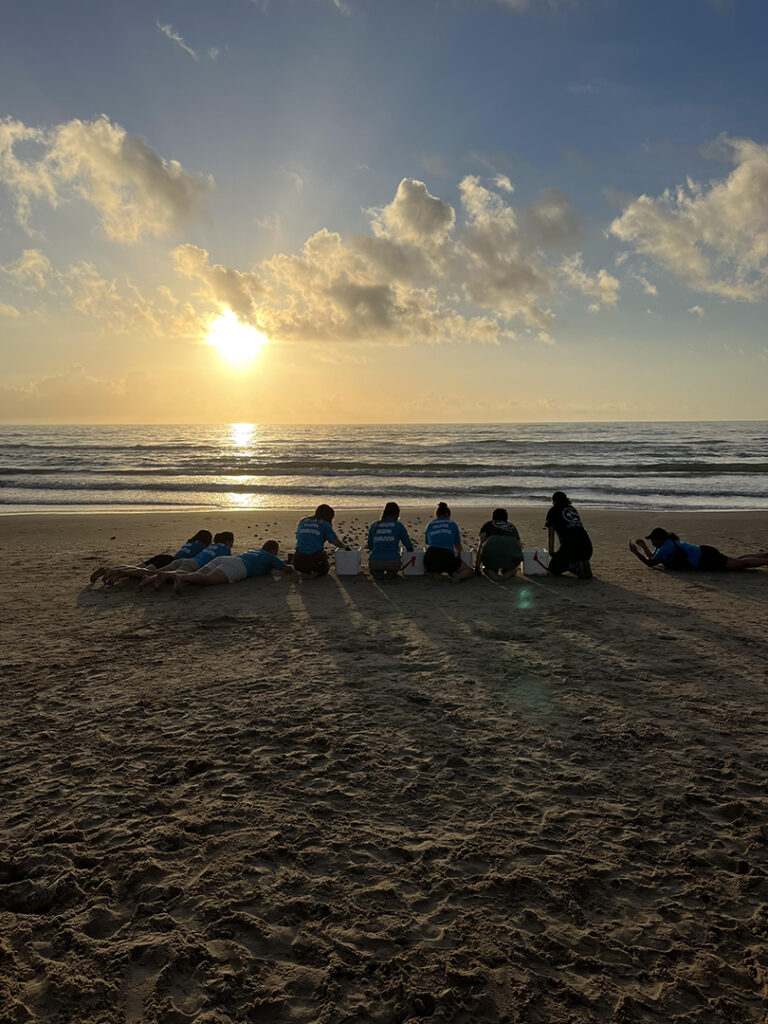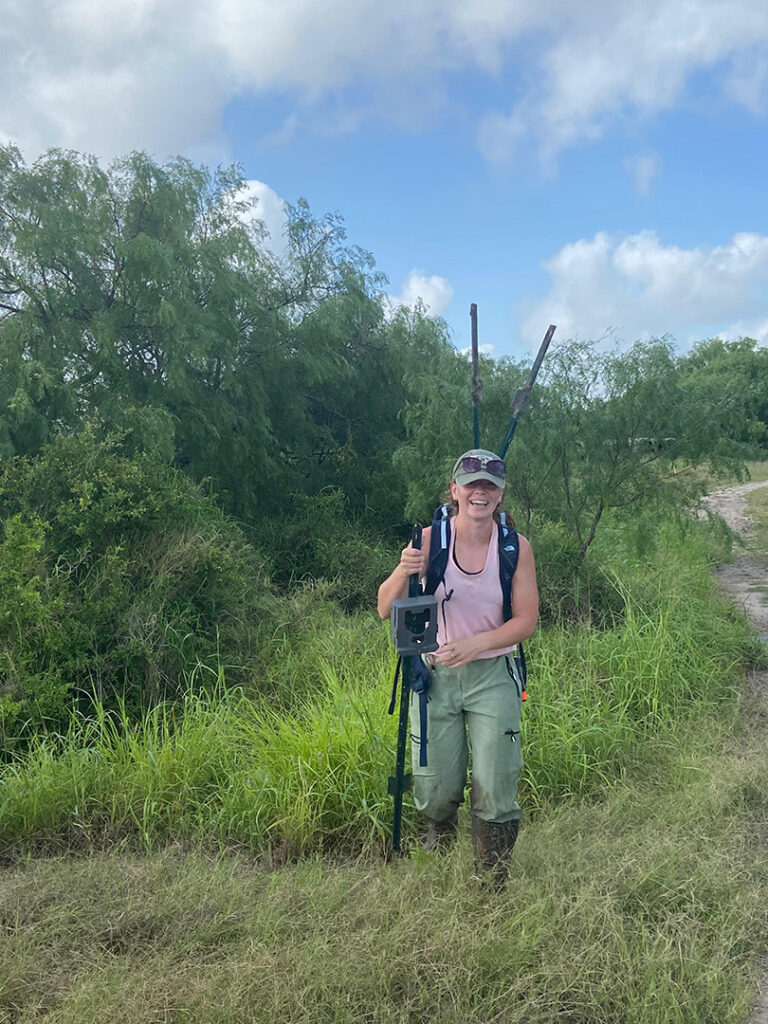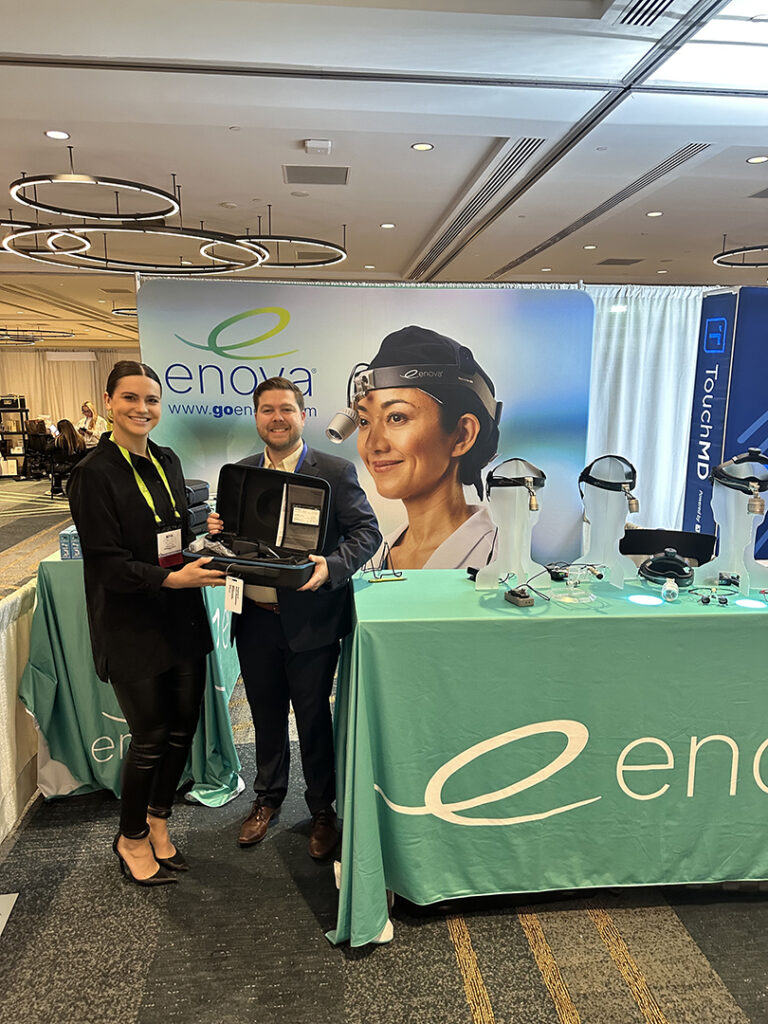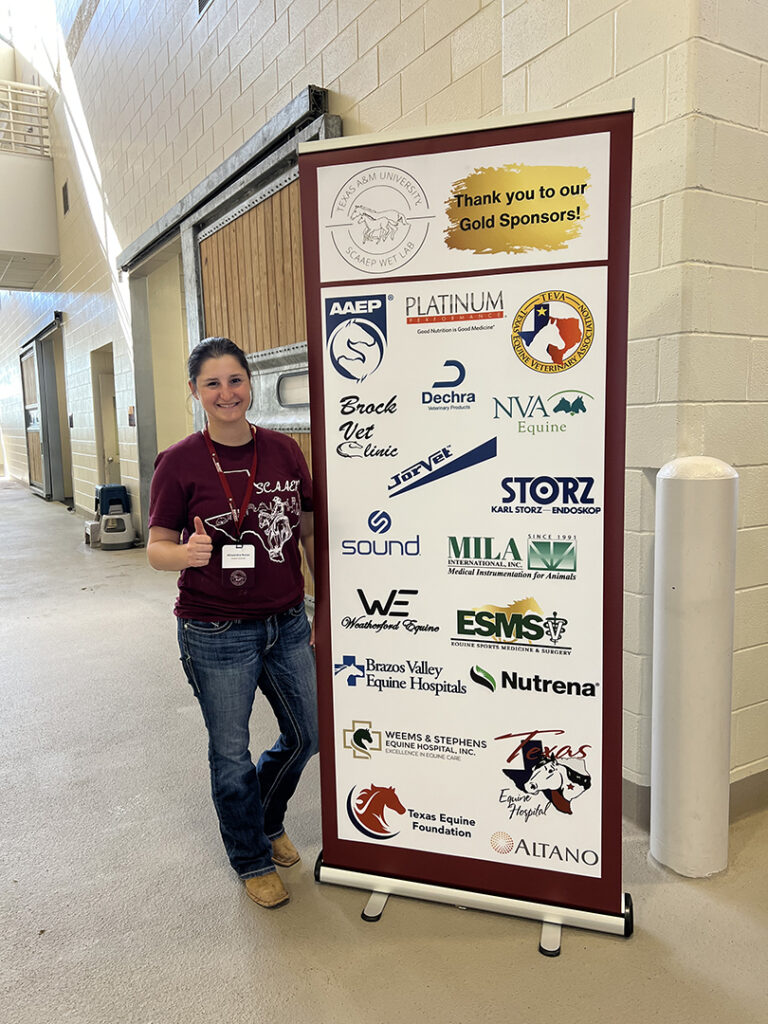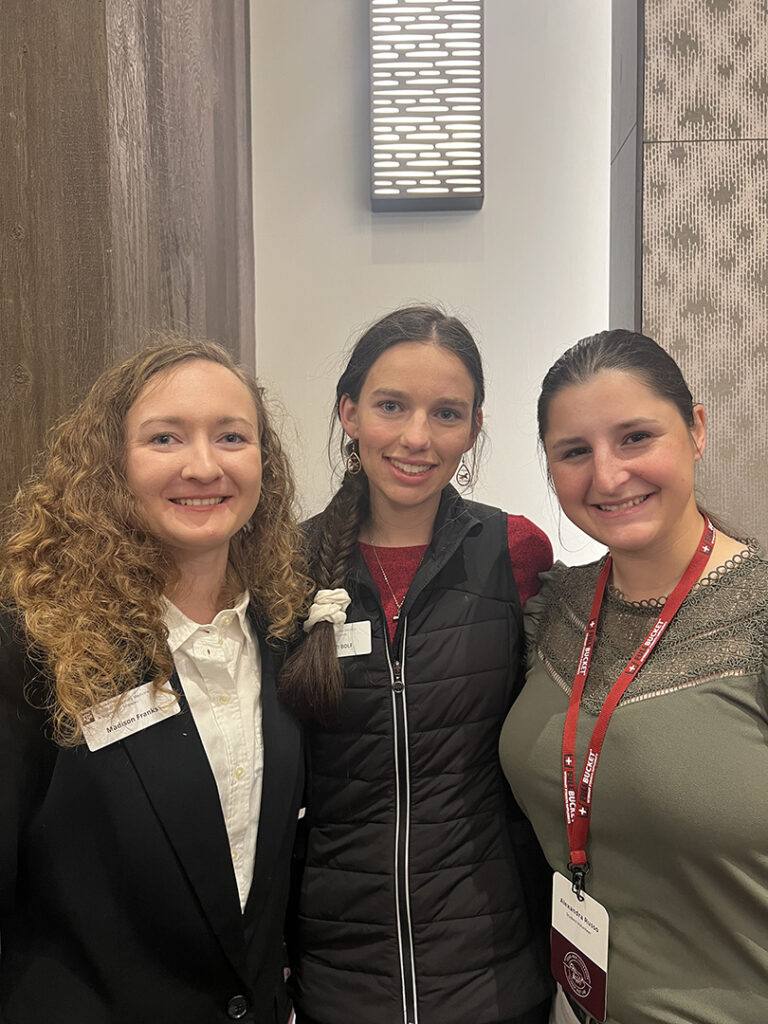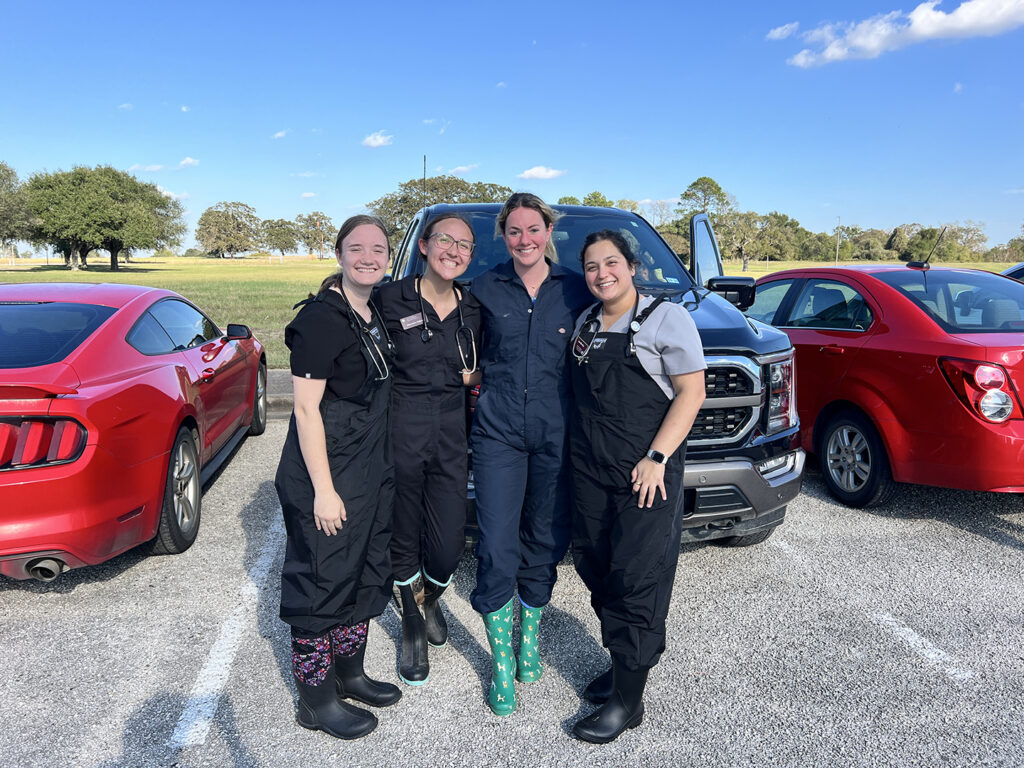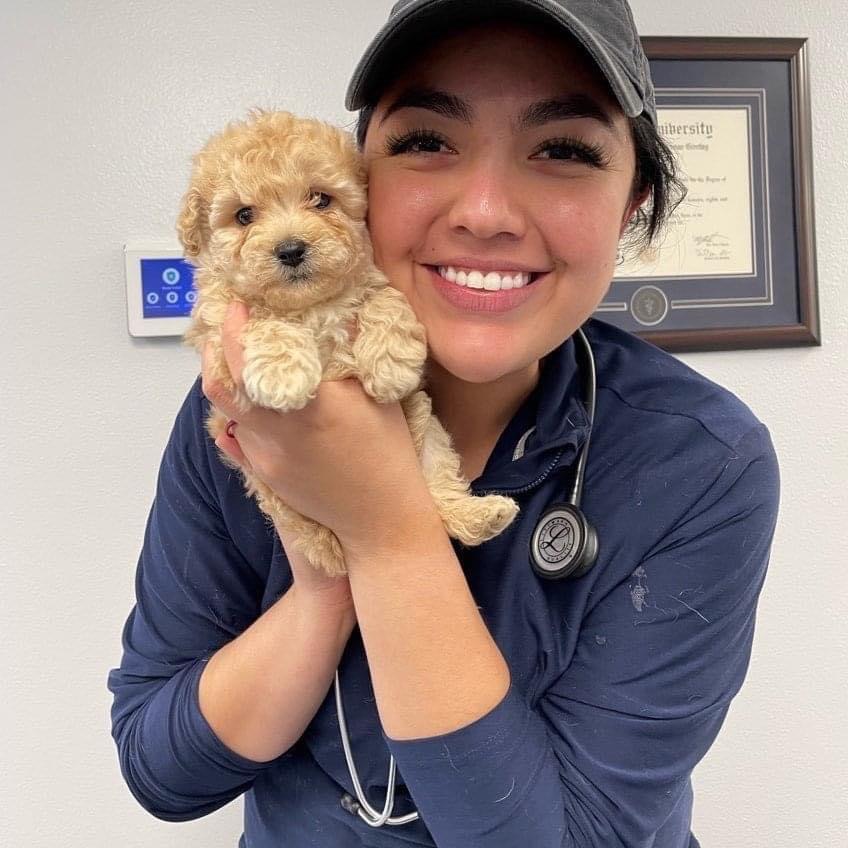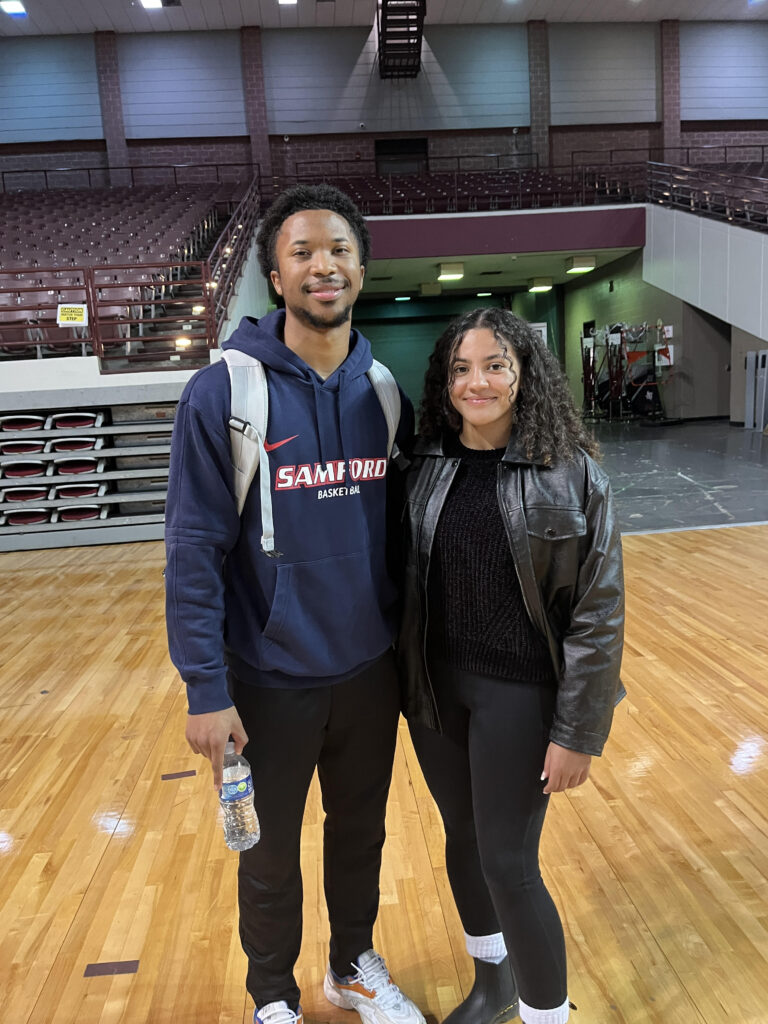By Reagan S. ’27, Doctor of Veterinary Medicine student
As I go through vet school, I find I’m grateful for the many veterinary learning opportunities I had access to in my high school years. Recognizing the importance of these opportunities has made me want to find ways to serve and provide similar opportunities to others while I’m in veterinary school.
Taking Inspiration From Mentors
Early on in high school, my vet and mentor Dr. Jason Thorne taught our 4-H club how to bandage horses, take vital signs, and other important aspects of horse care. He continued to serve through teaching the FFA veterinary science team different tools and treatment techniques that he used in everyday practice.
Another opportunity I had was the Oklahoma 4-H program, through which our local Equine Extension Specialist put on a Horse Science Academy. Every year we learned new skills, including how to test the nutrient levels of hay, horse first aid, tests for intestinal parasites, equine heart anatomy, and more. There were many more events I attended, and many of these opportunities were events or programs that required many volunteers to make it happen.
Paying It Forward
I realized in high school how important these opportunities were for me. The leaders of the events encouraged me to pursue vet school, and they gave me connections, opportunities to gain useful skills, and a space to explore veterinary medicine. I decided to ‘pay it forward’ and help with some of the activities that had been crucial in helping me explore my passion for animals and veterinary medicine. I gave speech writing and speech coaching workshops in the barn where the group met (with breaks to visit the horses of course!). The 4-Hers were all interested in horses, so I helped them find different horse topics they were curious about, helped the younger ones with typing their speeches, and coached them through how to practice and deliver them.
Creating Ways To Learn
Knowledgeable owners are key in keeping their animals healthy, so I designed a scavenger hunt for my local 4-H Horse Club with puzzles and clues that had to be solved with knowledge of horse diseases. The week before the hunt, I gave the kids a packet of information I had compiled over vaccines and how common diseases are spread, what causes the specific disease, and disease symptoms. The kids read over the information that week and then got to apply their knowledge working in teams to solve puzzles and get the next clue. Everyone had lots of fun during the event, and one mom told me her daughter liked it so much she wanted to do it for her birthday party!
Inspiring The Next Generation
I continued to find other service opportunities in veterinary school. One opportunity was Veterinary Education Day at the Texas A&M College of Veterinary Medicine & Biomedical Sciences, where over 200 local elementary-aged kids got to explore being a veterinarian. I was selected to be a co-leader to plan events focused on learning about large animals (horses, cattle, sheep, goats, and pigs). As the co-leader, I planned and gathered supplies for a horseshoe matching game, learning how to rope, a model on how horses see, how to make butter and where it comes from, and more fun and educational stations! I also continue to coach the local FFA veterinary science team and do educational workshops for my local 4-H club.
Giving Back In Veterinary School
I have discovered that there are many ways to serve while in veterinary school, and often many service opportunities closely align with my schedule as well as my interests and passions. For anyone looking to give back to their community, there are often several groups in your area that align with your interests that need volunteers throughout the year. I know volunteers were a crucial part of encouraging me and helping me discover my passion for veterinary medicine. Volunteering is a rewarding experience and can take many different forms, and you never know when you might make a positive, lasting impact on those you serve.




